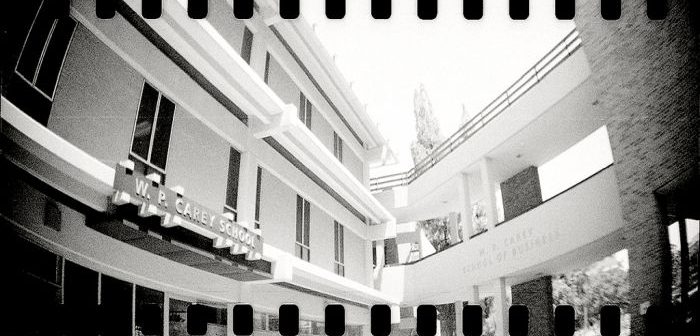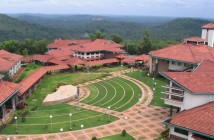Arizona University’s W. P. Carey School of Business stands apart from others for one singular fact. It does not charge tuition fee for every student in its full-time 2-year MBA program claiming that this disruptive business model enables it to be more selective in admissions.
Of course, the school stands to lose a substantial sum of money with the tuition fee pegged at $54,300 for Arizona residents, $89,200 for non-residents and $92,900 for international students but hopes to come up with a class of achievers and international students. Ever since the school decided to forgo tuition fee in 2015, it has also reduced the size of the class to about 120.
Similarly, GMAT scores went up to 682 from 672. Undergraduate GPAs also rose to 3.54 from 3.37. The GPA average was more than for such programs in Dartmouth Tuck, UCLA Anderson, and the University of Texas McCombs.
The move has led to improvement in GMAT and GPA scores, that would lead to good jobs and higher starting pay on completion of the program. This would also lead to improved rankings for the school. The funds for the fee waiver is coming from the endowment bestowed by investor William Polk Carey. In the long term, the school expects to allow the alumni to provide the funding as a sort of returns for their career progress.
However, the competition for admissions is tough. The number of applications nearly tripled during 2015-2016, up from 443 to 1,162 over the previous year. The school took in only 166 students, an acceptance rate of 14.2% compared to Columbia (17.1%) and Chicago Booth (22%). With 119 of the 166 students who accepted ultimately enrolled at the program, the yield was 72%, higher than MIT Sloan or Wharton.
Similarly, GMAT scores went up to 682 from 672. Undergraduate GPAs also rose to 3.54 from 3.37. The GPA average was more than for such programs in Dartmouth Tuck, UCLA Anderson, and the University of Texas McCombs.
The class of 2018, now in its sixth month, boasts of 43% women, up from the previous year’s 30%, a point below Dartmouth Tuck and Wharton for the highest concentrations of women in a full-time MBA program. The percentage of international candidates have also gone up to 31% from 29% in the previous year representing 24 countries. This was double that of the previous class.
ALSO READ: LBS Set to Launch “Flexible” MBA in August 2017
As far as academic background is concerned, undergraduate business majors account for 24.4% of the class followed by engineering and humanities at 20.2% each. The rest comprise Science and Math at 16% and social sciences at 11.8%.
Interestingly, in previous career choices, the Not-For-Profit and Education leads with15.1% followed by Consulting (14.3%) and Financial Services & Banking (13.4%). Technology (9.2%), Manufacturing (8.4%), Petroleum and Energy (8.4%), Healthcare and Pharmaceuticals (7.6%), Media and Entertainment (7.6%) were also popular.
Since the Not-For-Profit sector is low-paying, the Forward Focus scholarship proved to be a lifeline for Zachary Mardoc, a Peace Corps volunteer. The class offers great diversity with Chuka Ndukauba, an MD from Nigeria, aiming at a career change from medical care and research to business.
Moshe Cavalin, who got a bachelor’s degree in mathematics before he was 15, was a student intern at the NASA Armstrong Flight Research Center. Now 18, He earned his spurs successfully commercializing collision avoidance software within six months of work at NASA.”
The school has also revamped its MBA curriculum by increasing the graduation requirement from 48 to 60 credit hours. Surveys were conducted across alumni to industry executives to gain better insights on steps to make graduates better prepared for employment. Thus, the program has a stronger infusion of analytics, global perspective, and real-time decision-making.(Image Source:Flicker.com)




